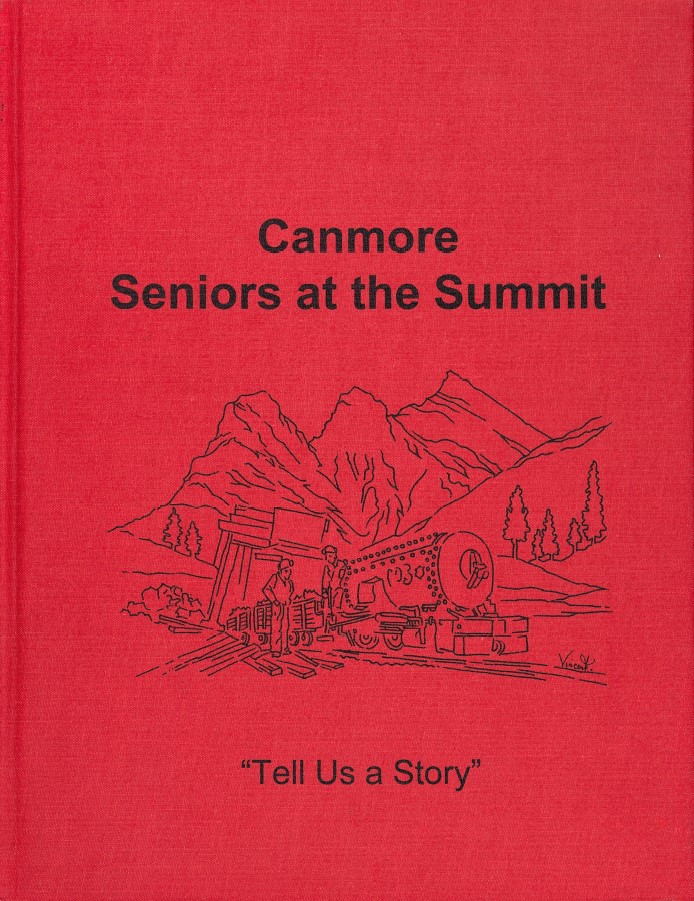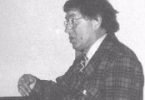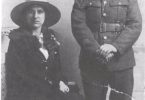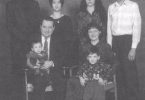I was born in Canada on Craigie Street in Hamilton, Ontario in 1913. They tell me I wasn’t born; I was a gift from God because they found me under a cauliflower. I was blond. My father came over to Canada in 1905 to work in the new steel works as a ball furnace man. My mother returned to Britain to have twins. She died with childbed fever and lost one of the twins. The survivor Rita lived for six months. My father took me over from Canada (he was a reserve in the yeomanry in Hamilton in Scotland) on the Carpathia, the ship that went to the aid of the Titanic. This event was two years later in 1916. Two brothers, Archie and Jackie, who had gone to England earlier with their mother, were farmed out to an aunt and uncle. I don’t remember my mother but I remember the funeral. I was wearing a sailor suit. Funny enough one of my pet hates is purple because it reminds me of the house. My wife’s father was a funeral undertaker by the name of McLay. He had Belgian Gip horses that pulled the hearse or Landulette. McLays owned property, about thirty flats, so we got a house over a general store. A local girl came in and ran the shop and looked after me. In 1920 my father married a relative far removed. She was only twenty at the time compared to my father who was forty. The local school was only a hundred yards away. My father wasn’t too much at home. He started a business with a Model T Ford and he drove a tipping wagon. Then on the weekend this was made into a charabang (like a coach) and it carried fourteen to twenty people all over Scotland. After the war in 1918 he went down to Gailes on the west coast. He used a GMC truck (charabang). He drove it in second gear for forty miles, ran out of gas in the wintertime, and had to walk three miles to a farm. Dad got a contract from a paper firm in Airdrie in Scotland to transfer the workers from day shift. To help he employed another man. Everything went well until about 1923 when there was a Depression. In 1926 there was a national strike in Britain. In 1927 he bought a little place near Mt. Vernon Glasgow and hauled coal to large houses, which was hard work. In 1927, I was fourteen and couldn’t drive so I got a job at Stuart and Lloyds and worked in dispatch. My wages were 6.875 pence an hour (about twenty cents an hour in Canadian funds 1999). The tubes were prepared for the oil wells at Chittagong Penang. I worked three years there. I cycled from Mt. Vernon ten and a half miles to work which started at six in the morning. With overtime I did quite well. We went to haulage in 1932. A big estate was being built and we did the excavations for it by hand. We got our first modern truck in 1934, a V-8 Ford truck. These were the first with headlights and electric lamps. This made hauling a lot easier although the loading was done by hand. This lasted until about 1939 and by this time we had about six trucks. We were employed most of all in the quarry, hauling sand, gravel and brickworks from the brick fields. In 1936 we started driving to big munitions works near the River Clyde which made shells, etc. When war broke out in 1939, the fleet of trucks was taken from us and we were given new trucks and used them for about two months. When the war broke out we were reserve because we had been working for the government before the war. We built gunsites and ammunition works. After the war things were in pretty bad shape. The Germans had destroyed many buildings.
I had two children, one born in 1937, and the other born in 1940. Then our son was born in 1945 after the war. He was called Victor James because he was born on VJ day. When I was forty-seven, I intended to go to Australia but my father said I would inherit the business upon his death. He lived until he was 104. After I retired I learned that I would probably pay excess tax. I was able to get a good job from eight to five driving an eight ton truck and trailer. I was there for nine and half years until I was seventy-five. Then I broke away from my father, “Mr. Ten Percent,” and went on my own. I was able to get a truck of my own – an “A” licensed truck- and these were valuable. We moved two miles away and bought a bungalow. We didn’t know that a big estate was being built half a mile away. We needed to be in a different area, therefore put the house on the market and were able to sell it for profit. We came to Canada (Canmore) for a year to see how we would like it in 1988. We have been here for eleven years. To keep active, I hike, I ski, I cycle, I bowl, and I curl.
My family did very well for themselves. Joe never went to university. Although he tried it, we knew he would be happier in another type of work because he was an outdoor type. We encouraged him to enlist because he could pick what he wanted to do. He joined the airforce. He was there for three years. After that he joined an electronic company (Pye Electronics). He then got the chance of a job with engineer consultants and was given a promise of a big increase if he concluded his year to the good. He made the grade but they declined to give him the increase. So he left after nine months and joined Euclid of General Motors. He was there for about thirty years and retired as the director of supply. He now lives in Airdrie in Scotland.
Betty was born in the worst winter of the war. She was a very outgoing child, much noisier than either of the two boys. She went to school, did quite well but left school to start in the work world. One year she went to the Isle of Man with a friend and family. While biking she tore all her good clothes in an accident. Then she went with the same family to MacDuff where she met her future husband, D.W. Watt, who was an intern at Aberdeen University. They were married in 1960 and moved to Aberdeen to let her husband finish his medical degree. We bought them a residential caravan and towed it from Glasgow to Aberdeen. They stayed in it for two years and then bought a flat in Aberdeen. However they couldn’t settle and bought a big house, next to the river. After living there for five to six years they moved to the outskirts of Glasgow. After the opportunity arose to do locum in Calgary, the husband realized he wanted to remain in Canada. Now he is the chief of radiology in Rockyview Hospital in Calgary. Their children are Natalie, Avril, Fraser and Dawn Anne. Dawn Anne died four years ago and left three children. Her husband died exactly four years later.
Jim lives in Southampton, England. He is director of a consulting company which does a lot of work for defense. He has two grown up children, Eva and Jason.
My wife, Anne, had to leave school at thirteen because she was the oldest of the family and her father had died suddenly. She worked at one of the biggest carpetworks as a weaver. Then she met me, Jimmy, in 1934. We winched for three years. Winching is the Scottish word for courting. We married in 1937 when Anne was nineteen. At that time I was in a cycling club. We did a lot of tandem cycling. I have two mountain bikes and still cycle in Canmore, frequently from Canmore to Banff. In the Medicine Hat Senior Games when I was eighty, I came second in the five kilometer race.
In Canmore Seniors at the Summit, ed. Canmore Seniors Association, 2000, p.157-158.








